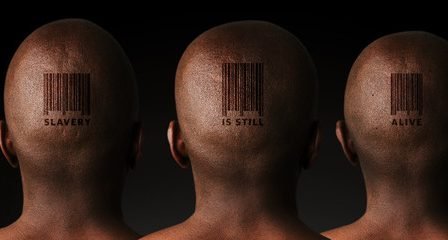
TRUMP SAYS: HUNTER MAKES FORTUNE FROM SHADY DEALS!
BIDEN FAMILY STINKS TO HIGH HEAVENS OF CORRUPTION!
DON'T GET LEFT OUT: HUNTER MUST BE STOPPED!

This article was originally published by Vibhu Vikramaditya at The Mises Institute.

A plague unlike any other in modern years appeared on our shore as early as 2019, but it wasn’t until the start of February 2020 that the world began seeing massive surges in cases. Banking on the premature experiment in China, which implemented full-scale lockdowns dispensing with civil liberties in order to lower the transmission and mortality rate, the US and other countries around the world started implementing full-scale lockdowns which resulted in more than 3.9 billion people, or half of the world’s population, being told by their governments to stay home.
Various studies have now shown that public policy measures such as compulsory and enforced lockdowns have systematically failed to improve mortality rates due to covid. One of the premier studies is from Johns Hopkins Institute for Applied Economics titled “Literature Review and Meta-analysis of the Effects of Lockdowns on COVID-19 Mortality,” which found that lockdowns in Europe and the US reduced covid-19 deaths by 0.2 percent.
At the same time, these very lockdowns and other stringent measures exacerbated economic ills and have led to one of the worst periods in modern economic history, with slow growth, and with inflation shooting through the roof, hitting 8.5% in March. It thus becomes vital, amidst calls for a great reset, to examine how we got where we are.
The economy is a huge chain of division of labor, interlocked to such an extent that there are no single individuals or firms which produce the whole of any given product alone. In a world where the producer of any single good relies on many precursor inputs, the consistent flow of goods and services becomes indispensable to sustaining and reproducing the structure of economic activity.
It was therefore clear what the lockdowns and cancelation of economic activities were going to lead to. Goods and services in the marketplace are not homogenous in nature and do not perform the same role in the economy. Consumer goods are directly consumed by the consumers, and therefore do not lead to the downstream effects that capital or producer goods cause. When a consumer good becomes scarce on the market, the resulting change in price will not directly lead to changes in the prices of other consumer goods. But when a producer good such as iron (or oil or nickel) becomes scarce, the change in the price of iron leads to changes in the prices of many other goods, because iron is used by many other producers as an input for their goods. Thus an underlying change in the price of iron will lead to changes in the prices of all those goods which use iron due to its increasing cost.
When the covid pandemic began, some economists predicted a total collapse in consumer spending. Based on the idea of the “paradox of thrift” (an increase in savings causes a reduction in the spending that the economy depends on), those economists advised governments to hand huge monetary help to consumers. The consumer thus had more money at his disposal than he had previously, or would have had if he lost his business or his job without this government support.
This additional consumer income was spent by consumers on increasing their consumption, which actually increased during lockdowns, while the flow of output decreased due to the lockdowns. According to the Bureau of Labor Statistics, when the pandemic began, consumer spending in the second quarter of 2020 had fallen and was down 9.8 percent from the same period in 2019. One year later, however, consumer expenditures were 15.7 percent higher than a year earlier. Consumer expenditures in the first and second quarters of 2021 were even higher than in the first quarter of 2020, which was largely unaffected by the pandemic because it began late in the first quarter.
As consumer goods producers ramped up production to meet this demand, this led to increasing demand for the inputs that those companies use. But the producers of these inputs did not see any reason to increase their production level and capacity from previous periods, since the increasing levels of consumer demand would have been impossible without the government’s monetary intervention, and were thus at best temporary. This shortfall in output produced as well as supplied to the market was further exaggerated by the manufacturer shutdowns. Capacity utilization index does a great job of highlighting the effects of lockdown on fall in production activity.
The capacity utilization index (which measures the output currently produced as a percentage of its full capacity) dipped below 65.0 percent, whereas in the United States the long-run average (1972–2019) has been 80.1 percent. The index during the lockdown was just 1.9 percentage points above its trough during the Great Recession.
When the production of consumer goods and their direct inputs started to increase, that led to increasing demand for goods in the primary sector. This pressure is a result of increasing competition in the market for scarce resources, there are some primary goods which hold more importance than others as they serve as the base of the products to be produced. These primary sector goods include oil, steel, various forms of metals, food inputs, etc. It was when the producers of these and other primary goods began raising their prices that inflation became an internal, self-perpetuating phenomenon.
While the government was extending its fiscal hands to monetary stimulus, the Federal Reserve had already started lowering its interest rate at the end of 2019. Suddenly, with the onset of covid, it went full throttle and lowered the rate from 1.58 percent in February 2020 to a disastrous 0.06 percent in April of that year and kept it near zero for two whole years. It was still 0.08 percent in February 2022, near the time when the realization that inflation was not transitory set in.
But the damage had already been done. The low interest rates had created a massive expansion, which gave the impression that the US economy had recovered from the lockdown-imposed recession. The result of this expansion was immediately seen in the increased number of businesses opening during the one-year period between March 2020 and April 2021. It is estimated by the Census Bureau. that a total of 4.4 million new jobs were created during that year.
This boom created out of the massive credit expansion and monetary handouts led to increasing investment and capital formation in the form of new equipment, new machines, new shops, new factories, etc., to fulfill future demands that entrepreneurs expected to happen in the future. Entrepreneurs were led to these, what may turn out to be mistaken expectations by the increased spending in the economy created by those monetary handouts and easy money policies from late 2019 to early 2022.
Today, while the Fed is combatting rising inflation by increasing its interest rate, inflation has already become a self-perpetuating phenomenon that lowers people’s real income. When prices rise, the total products and services that a consumer can buy with his present income drop, therefore a consumer in order to do best with his left income scrutinizes his consumption from previous periods and picks the most important ones he can afford while having to give up consuming others. During a general rise in prices, this effect takes place in sectors, which leads to fall in industry level demand for goods.
When demand starts to fall, the revenue received by each consumer goods or services firm falls. These firms then cut back on their output, which leads to unemployment. This is where we stand today, at the edge of a possible stagflation. The next few months will be crucial with respect to the severity of this stagflation. If the unemployment rate increases over the next few months and inflation doesn’t subside, then we may be heading into a recession in the next fiscal year.
This recession will be a product of exuberant consumer spending and investments fueled by monetary handouts and easy money policies. Entrepreneurs make investments on the basis of future expectations of profits, and during the covid period, expansive monetary stimulus led to rising demand and profit levels which fueled and sustained these expectations. These investments, which are destined to fail, are a result of the deliberate distortions of price and profit signals which the government and central banking engaged in through manipulating interest rates and fueling spending.
Firms pay interest on their loans, which implies their profit margin must be above the amount of interest paid in order to continue production. Lower interest rates therefore also increased the profit margins of firms.
Today the Federal Reserve is increasing its interest rate while high inflation is lowering consumer demand; both these factors are contributing to reducing the profit that firms realize. Firms in response will reduce and cut back on production, which will lead to increasing unemployment, and increasing accumulation of unsold inventories in the market. This latter point is demonstrated by the fact that the monthly change in wholesale inventories in the US was an increase of 2.3 percent to $840.3 billion in March of 2022.
If prices keep increasing while rising unemployment reduces consumer spending, then the prices of all other outputs will decrease, because the prices of input goods depend partially on the prices of final output goods. This reduction in prices will tend to lower inflation, but a recession will already be underway. Both the Fed and the government will be defenseless, as the Fed, to fulfill its 2 percent inflation mandate, will increase interest rates, while the government’s fiscal arm will be restrained due to the high political costs associated with more handouts prior to the upcoming elections, and with the experience of its constituents with inflation.

It Took 22 Years to Get to This Point
This article was originally published by Michael Snyder at The Economic Collapse Blog. When one...
The United States doubled its troop presence in Syria to 2,000 as the ruling class is determined...
This article was originally published by Lance D. Johnson at Natural News under the title:...
Commenting Policy:
Some comments on this web site are automatically moderated through our Spam protection systems. Please be patient if your comment isn’t immediately available. We’re not trying to censor you, the system just wants to make sure you’re not a robot posting random spam.
This website thrives because of its community. While we support lively debates and understand that people get excited, frustrated or angry at times, we ask that the conversation remain civil. Racism, to include any religious affiliation, will not be tolerated on this site, including the disparagement of people in the comments section.


It isn’t what we see, be it Covid and related issues or any of the social and cultural issues that dominate our lives today, it’s what’s behind the scenes, the intended outcome it all works toward, that matters.
You have to “step out of the box” and take an impartial and comprehensive look to see it, and very few people do.
Of those few that do, we ignore them because they’re some kind of tinfoil hat nutcases and extremists that we need to ostracize from the public forum, not reasonable people that should be paid attention.
That’s just the way it is, nothing can be done to change it.
The sad thing is this: all that money we have spent, none of it has gone into actual health measures that make people healthier. If they had used that money to actually put in place an effective vaccination regime, proper dental healthcare (poor dental hygiene leads to many diseases), clean water for the turd worlders, and information campaigns on good diet etc., we would be in good shape. Instead, they told people to stay at home, and eat, eat, eat.
It is amazing how fast the western civilization has collapsed due to interference from the self appointed elites.